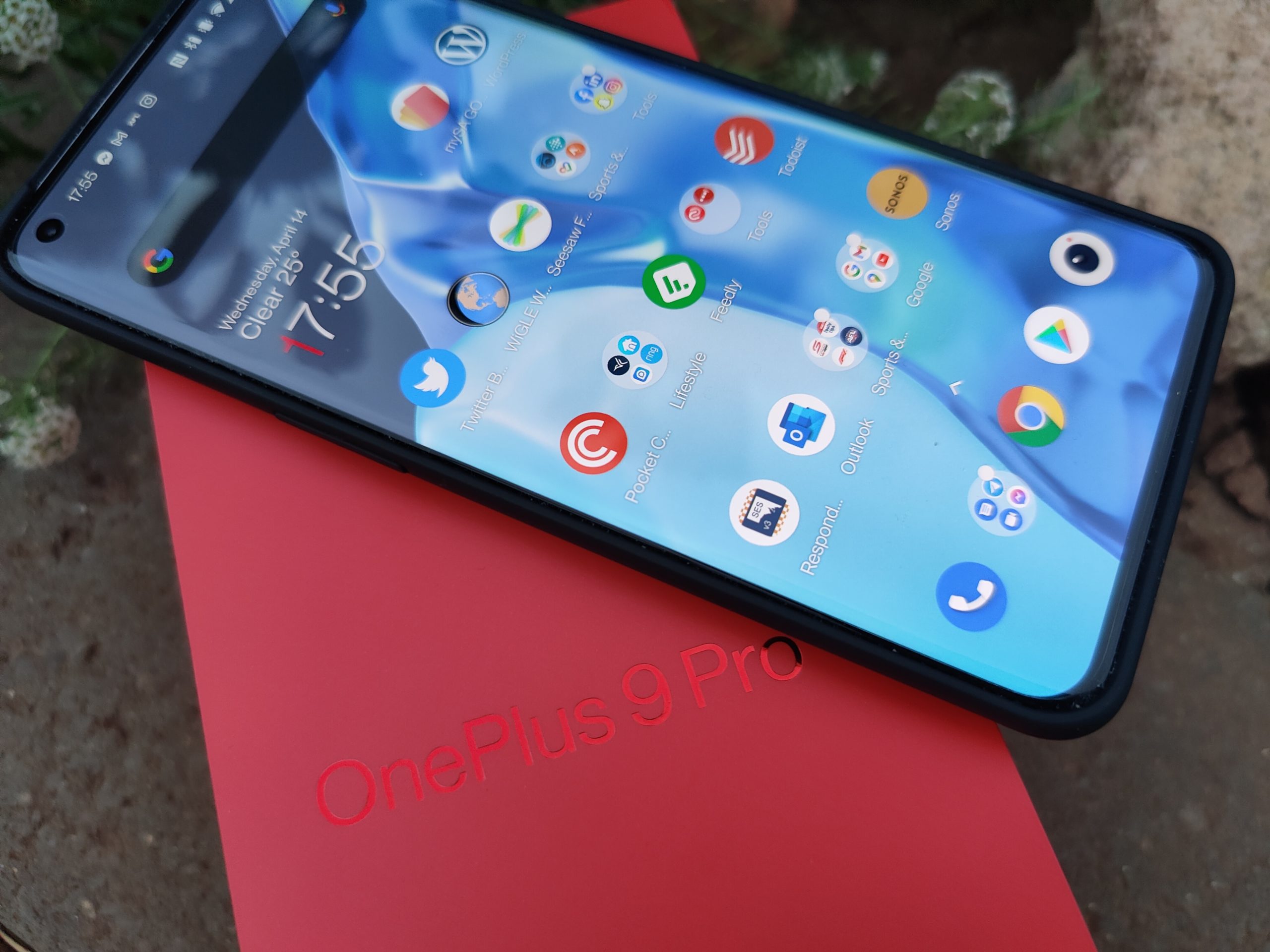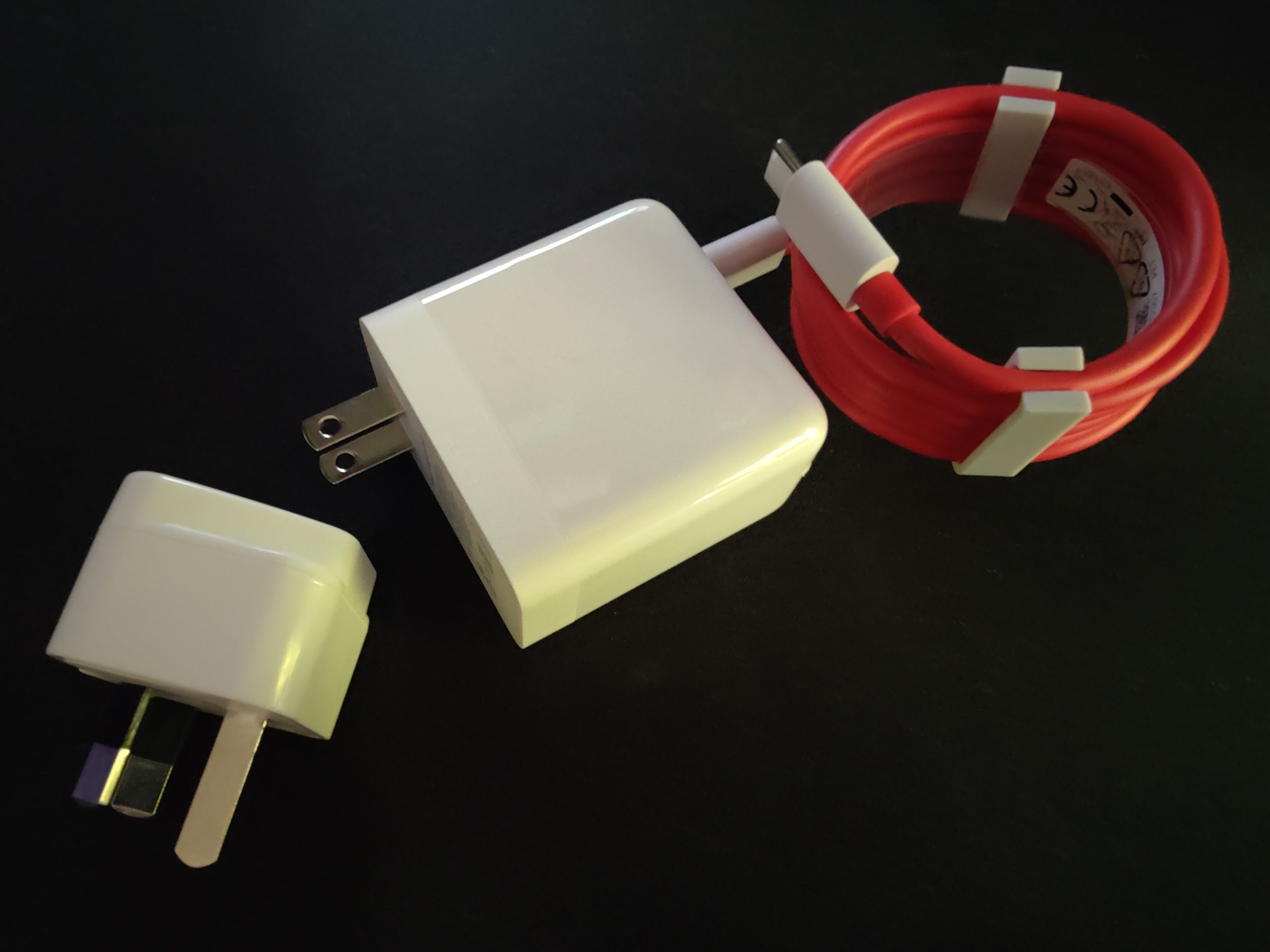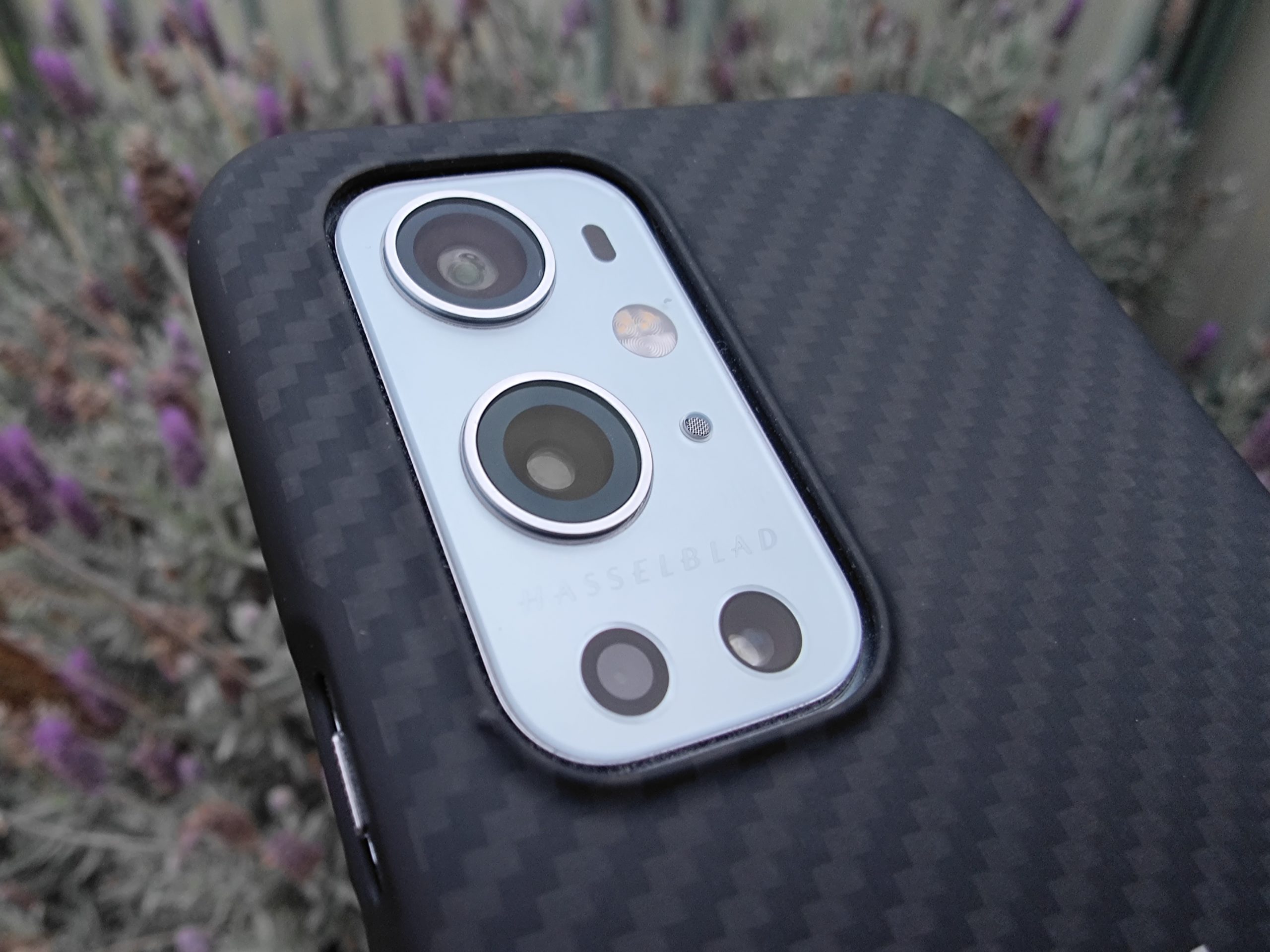I’m really excited to have the OnePlus 9 Pro in my pocket because I’ve always enjoyed the OnePlus experience. This year is a bit different though because OnePlus have continued from last year and are making a very clear move away from a “value for money” offering, to a high end competitor to the likes of Samsung, Apple and Huawei.
Sadly for fans of OnePlus, there’s still no “official” way to get your hands on OnePlus devices but there are pathways through some of the online providers. We know they’ve got a strong interest in the Australian market and lots of devices in our market, so we continue to work closely with OnePlus to ensure we get our hands on devices wherever possible.
This year it seems like OnePlus has put everything together and hit the mark, ready to compete with the best that the mobile market has to offer.
Hardware and Design
We won’t go delivering into the specs too much in the review, because that’s been covered already in the device release and first impressions. Suffice to say, OnePlus have included everything that’s needed and more to meet consumer needs and call the OnePlus 9 Pro a flagship device. So in today’s review, we’ll be looking at a few key features and the user experience with the OnePlus 9 Pro.
The display is a definite highlight of the hardware delivery. It’s sharp, bright, high resolution and high refresh so it’s liquid smooth for gaming and video. As the primary user interface, OnePlus have again done a great job of making the screen reactive to touch and just a delight to use. There are a couple of — truly being picky here — issues with the display though.
- The issue most users are going to see is related to the screen’s curve and primarily if you’re not using a case. I found that the shape of the device, coupled with the screen curve resulted in some false touches being detected. A minor issue that could, at least partly, be resolved with some software tweaks but it is annoying
- The refresh rate on the screen is really good 99% of the time. It’s dynamically adjusted by the software according to the needs of what’s running. This has the effect of saving battery when you’re not using that high refresh rate which is a well-known battery destroyer. The problem is that when it’s adjusted down low (as low as 1Hz refresh to save battery) you can get frame drops on animation. I never noticed this during media playback or gaming, clearly because of the dynamic adjustment recognising the need and winding up the screen.
I’d really like to have seen a third option in the screen settings, but alas, there’s only two. You have the option to either force the screen to 60Hz which you’ll notice the battery life improvement or “smart” 120Hz which dynamically adjusts the screen to whatever you’re doing at the time.
The other hardware decision that I’m really pleased with is continuing the IP68 rating. While not everyone needs this daily, having your phone capable of surviving a spilled drink or accidental dunk in the sink is a good thing for the long life of your device.
A gorgeous, but generic look
It’s been interesting trying to put my finger on the look of the device, but while it is gorgeous; it’s also quite generic this year. Probably the most distinct area of the OnePlus 9 Pro’s look that stands out is the camera bump which we’ll delve into later.
Generally speaking though the areas of note that most users will pick up include the hole punch camera which is quite small, the curved display and the narrow bezels on the display. But if you flip it over, you’re looking at a really shiny fingerprint magnet. It really is gorgeous but I found myself polishing down the back regularly to keep the device looking good.
Battery and Charging
We covered the battery life and charging in our first impression post a couple of weeks ago. Since then though, we’ve seen a couple of software updates and the battery life has improved a bit, taking it from pretty good to giving really good battery life. I’m now — on a normal day — getting to the end of the day with around 30% of battery remaining instead of the high-teens. Not a huge difference but enough to notice.
What is worth focussing on here is the battery and charging capability built into the device. The Warp Charging and Wireless Fast charging is just stupidly fast, with the 65W Warp Charger restoring around 3% of the battery per minute that the device is plugged in and the wireless charger doing between 4 and 5 % every two minutes (so really not much difference). This results in a full charge from the wired charger in half an hour and wireless charger in around 37 minutes This was consistently the case throughout our testing period with the phone.
There’s a problem here for Aussie buyers too – the plugs provided are US plugs. THere’s a couple of ways around this, the first is to buy a converter which is relatively cheap and easy but some don’t like this as a long term solution. The second is to grab yourself a Super VOOC charger from an OPPO dealer because those will also Warp charge your OnePlus device.
I do wonder, perhaps worry, about the effect that the fast charging will have on the lifespan of the battery. What this will look like in 12 – 24 months time is a mystery right now so we’ll just have to wait and see, but it is worth noting that the software is now smart enough to recognise that you’ve plugged in late at night and slow the charging down to avoid that heat build up.
The OnePlus Software is still a highlight with every single device
Anyone who has used a OnePlus device since the OnePlus 6 range came out, will likely argue with you that it is the best Android Skin. Not because it’s the best at everything, but because it does everything well and without annoying, manufacturer based intrusions into your device use. What you’ll find is that apps open really quickly, it transitions between apps quickly, the user interface is smooth and fast and with a screen this nice it’s just generally a delight to use.
If you’re someone who is yet to make the change to using gestures instead of the home, back and app switch onscreen buttons, now is the time. With the performance of the latest crop of devices, you will quickly learn the gestures and it’s for your own good. You’ll get the full benefit of the hardware in your hands, the software capabilities and the user experience is smoother.
Now it’s fair to comment that this isn’t “Pixel” stock in terms of the Android presentation, but it’s pretty darn close. Ultimately, if you like your device to be stock Android or very close to, without intrusive apps, notifications or features you’ll likely never use then grab yourself a OnePlus device – You won’t regret the decision or the hard work.
Has OnePlus finally pieced it together and given us a brilliant camera?
The short answer is yes, OnePlus has taken a couple of big steps closer to the Samsung and Huawei level of photo production and no… because while the photos are clearly a more natural colour there are still some problems with the results you’ll get from the camera and some within the app itself.
The camera specs — briefly speaking — are at the right end of town to tick the boxes. The main camera is a 48MP f/1.8 wide-angle lens complemented by an 8MP f/2.4 telephotos, 50MP f/2.2 and a 2MP f/2.4 depth sensor. If you’re that way inclined, the selfie camera is a 16MP f/2.4 wide-angle lens, so all around the physical camera capabilities are huge, but you need the right software to back it all up; enter Hasselblad.
The partnership is said to be worth a whopping US$150 million in camera technology over three years in a new partnership with Hasselblad. As an immediate action, this has come in the form of software tweaks providing colour tuning and sensor calibration. Here’s one of the first issues to date: The software seems to be the cause of some overheating issues on the OnePlus 9 Pro, which has been identified and an update rolling out to address the underlying issue.
Before we get into the results of all of this, there’s another issue to put forward. The images aren’t what you think you’ve got and that can be a big problem if you’re not taking into account the shutter lag. From a couple of messages I’ve had from colleagues who’ve also got a OnePlus 9 Pro, the issue is also consistent where when you take a photo, the preview — particularly if you’re shooting a fast moving target — isn’t what the final photo is. You could be around a quarter of a second out of sync.
For those who are taking still shots of stationary, or slow moving targets this probably won’t be noticed. I noticed this in the main street of Hahndorf on a family outing, taking a photo down the street then immediately opened the preview. I was surprised to find that the preview then “snapped” to a point where vehicles and people in the shot had moved to a fairly significant extent. It seems that the preview is purely based on a screenshot of what was on the screen when you pressed the shutter button, but the processing takes a moment or two. It’s something you can adjust to, at least to some extent but I’d challenge anyone to take action shots of sporting events or even fast moving targets like kids and get the shot you want or expect to.
Onto the products of the camera:
They’re honestly really solid results giving very good photos and at times they’re great results but it has to be in the right conditions. There are a couple of qualifications to this though and I suspect this is due to the software processing after image capture particularly if there’s lighting that is low or inconsistent in the shot.
I’ve found that if the lighting is inconsistent, shots are often coming up with far better lighting than is actually present. While that’s not always an issue, it can be if you’re looking to show how light and shadow has fallen. You can, of course, use the “pro” mode to overcome some of these post-processing issues.
The other issue that’s evident from time to time is that while the colour processing is very good, is that it overcorrects sometimes. The two main issues seen in our testing so far is making some environment too “warm” if there’s a bit of yellow light around, or in clean lighting in a white room there can appear to be a faint blue filter on your shots.
While they’re not ideal results with the warm and blue effects on some shots, these can likely be resolved with a camera software update which (given the camera is causing overheating on some devices) is likely to come sooner rather than later. The end result is that the camera on the OnePlus 9 is generationally better than last years devices and produce genuinely excellent photographs most of the time. But they haven’t yet nailed the right formula to match it with the top camera phones.
It’s all sounding really good, should you buy?
This is an excellent phone and it’s another great experience if you choose to grab the OnePlus 9 Pro. From a day to day consumer perspective the downsides are going to be a bit obvious on a couple of fronts:
- The pathway to acquisition isn’t a particularly easy one with online purchase the only option
- The price will be a detractor for some, with the purchase price coming in at about AU$1,400.00
- If you’re really picking with your camera, it might be best to wait for a software update before committing to buy
There’s really not a lot else, even being very critical of the hardware and software to pick at. OnePlus have done a superb job of building a device that will not just suit, but excite the masses and not just enthusiasts. The look is a little more generic than previous years and the curved edge of the display is aesthetically nice but leads to a few minor issues. At the end of it all, it fits in among so many other devices that sell big numbers from the likes of Samsung, Google, Apple and even their stablemate OPPO.
If you really like stock or “pure” Android experience, then the OnePlus experience is one that you’ll enjoy. Their software hasn’t had any of those intrusive features in it and there’s no indication that they will add them either.
It’s a reasonable bet that unless you’re a really heavy user, you’ll see a full day out with the battery and if you don’t – just 10 minutes wired or about 12 on wireless charging will restore 30% of battery, it’s crazy fast and so useful. The main thing preventing OnePlus from selling truckloads of devices in Australia right now is the fact they don’t have truckloads of devices in Australia. You can get your hands one through the grey market importers like Ali Express, Expansys and Kogan if you’re really keen on one.
For those who like bricks and mortar stores, the OnePlus 9 Pro right now, is one of the best phones we can’t easily buy in Australia.
Disclosure Statement
Due to shipping costs OnePlus have not requested the reutrn of the OnePlus 9 Pro to them
































Killer device!! It will be interesting to monitor the “long term” battery life – as you say, the super quick charging does raise questions. However, am I right in saying that they achieve these stupidly fast results by having 2 separate batteries running in parallel? Thus, each battery in isolation is accepting only half the power delivered and thus technically not stressing the battery as much…. I am definitely not a battery expert – so perhaps the impact is the same given the physical size of each battery is smaller and thus will heat up to the same levels even… Read more »